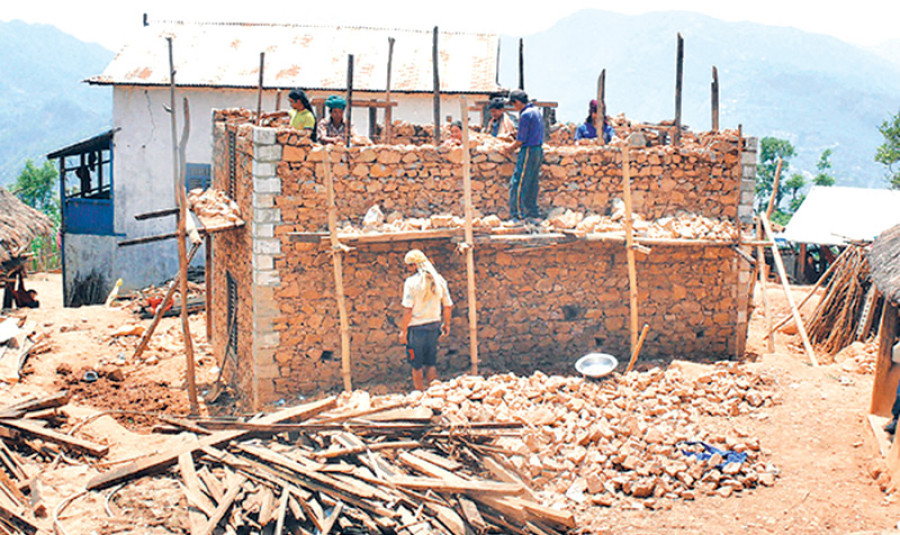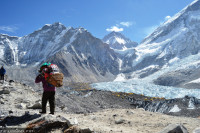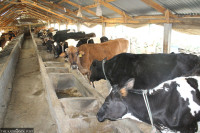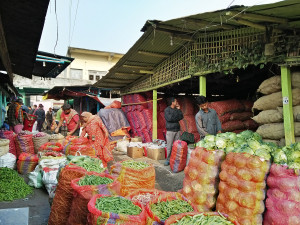Money
National building code: 94pc of houses in Kathmandu unsafe
Ninety-four percent of the houses in earthquake-prone Kathmandu Valley do not meet the National Building Code and are vulnerable to seismic impact, a study conducted by the Ministry of Urban Development (MoUD) in collaboration with the Japan International Cooperation Agency (Jica) revealed.
Sanjeev Giri
Ninety-four percent of the houses in earthquake-prone Kathmandu Valley do not meet the National Building Code and are vulnerable to seismic impact, a study conducted by the Ministry of Urban Development (MoUD) in collaboration with the Japan International Cooperation Agency (Jica) revealed.
There are an estimated 444,554 homes in the Valley. According to the survey report, only 6 percent of the houses are reinforced concrete engineered and 48 percent of the houses are non-engineered reinforced concrete structures.
According to Suman Salike, senior divisional engineer at the ministry, 6 percent of the houses have been built with pillars measuring 12x12 inches which is in line with the building code. The non-engineered houses have pillars measuring 9x12 inches or 9x9 inches.
“Apart from the size of the pillars, we have considered different aspects including the structure and location,” Salike told the Post, adding that houses as tall as five storeys have been found to be safe in Kathmandu compared to high-rise buildings.
The MoUD is currently reviewing the National Building Code to ensure that the houses are safe. “It is disturbing to note that people have not been following the building code,” Salike said. Local bodies like Kathmandu Metropolitan City and other municipalities in the Valley should enhance their monitoring mechanism to ensure that the building code is obeyed.
Likewise, 21 percent of the homes are masonry constructions (brick or stone) with cement mortar while 19 percent of the homes are masonry constructions with clay mortar. The remaining 4 percent of the homes are adobe structures and 2 percent are made of wood or steel trusses.
The study has analysed post-earthquake scenarios at three different ground intensity levels (slight, moderate and heavy) in a 7.8 magnitude earthquake in Kathmandu. As many as 101,489 houses in several places in the Valley including Bhaktapur, Lalitpur, Karyabinayak and Budhanilkantha were studied. At least 10,000 homes were studied in a single location.
Meanwhile, the study has found that around 8 percent of the homes in Kathmandu were damaged by the 2015 earthquake and need to be rebuilt or retrofitted.
Two years after a devastating earthquake levelled hundreds of thousands of houses in the country, the ministry this week unveiled the Seismic Retrofitting Guidelines of Buildings to help builders retrofit existing buildings and make them earthquake resistant.
Property owners can hire consultants or engineers and initiate the process of retrofitting their houses based on the guidelines prepared by the government.
According to Salike, a wave simulating an earthquake was transmitted underground to check for possible seismic risk. Kathmandu has been listed among the 11 most vulnerable cities to seismic impact in the world.
The study has revealed that the southern section of the Kathmandu may be highly impacted in case of an earthquake as severe as the Gorkha earthquake with higher ground intensity.
According to the ministry, the 2015 Gorkha Earthquake claimed 8,790 lives while over 23,300 were injured. More than 500,000 residential buildings and 2,656 office buildings were completely destroyed and almost 200,000 residential buildings and 3,622 office buildings were partially damaged.
Likewise, over 19,000 school rooms were completely damaged and more than 11,000 rooms were partially damaged.




 8.12°C Kathmandu
8.12°C Kathmandu














